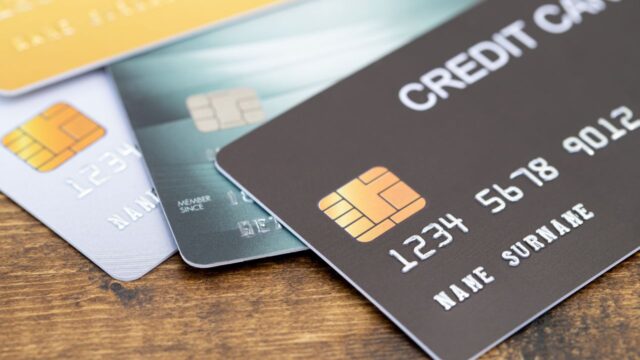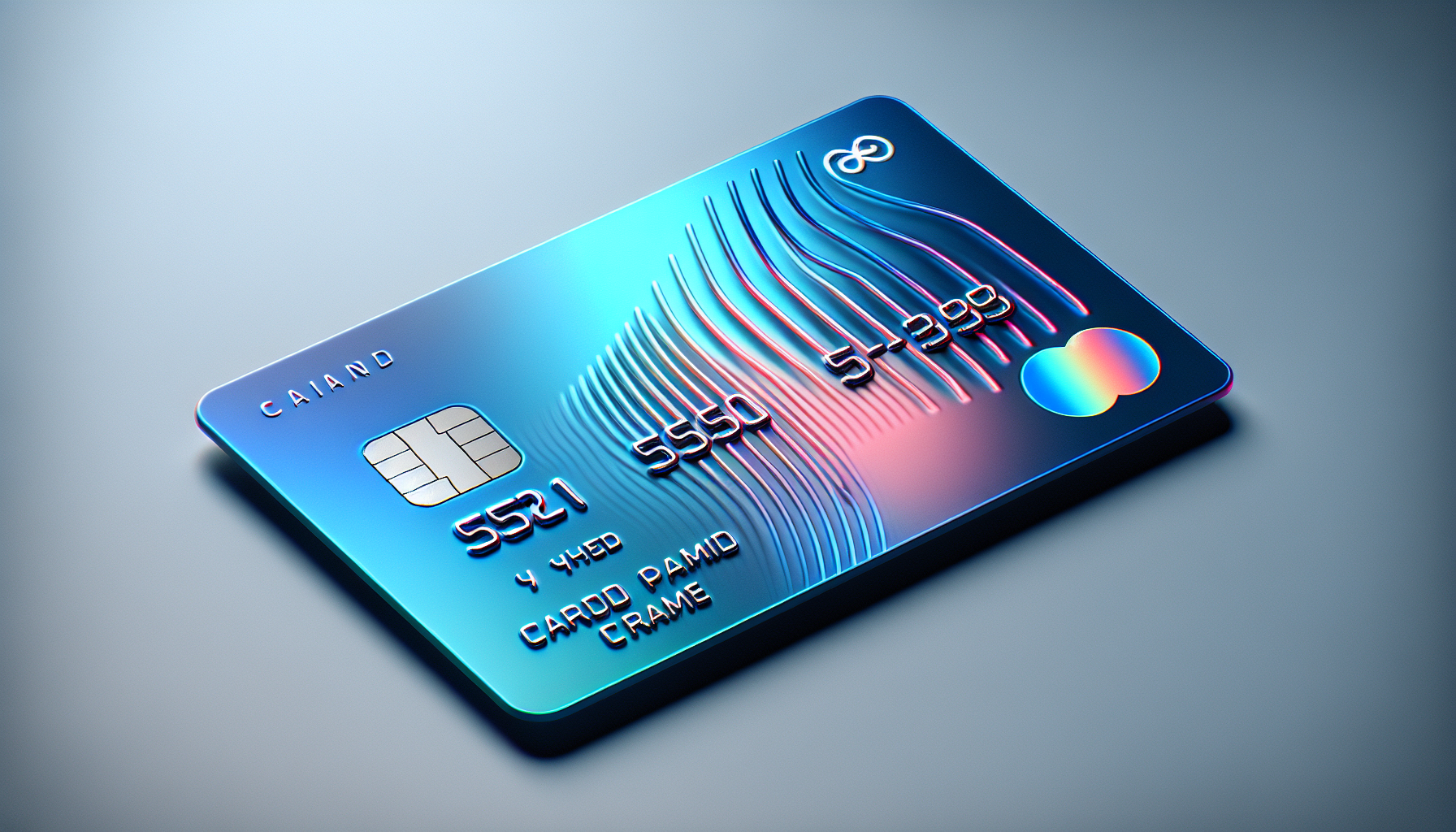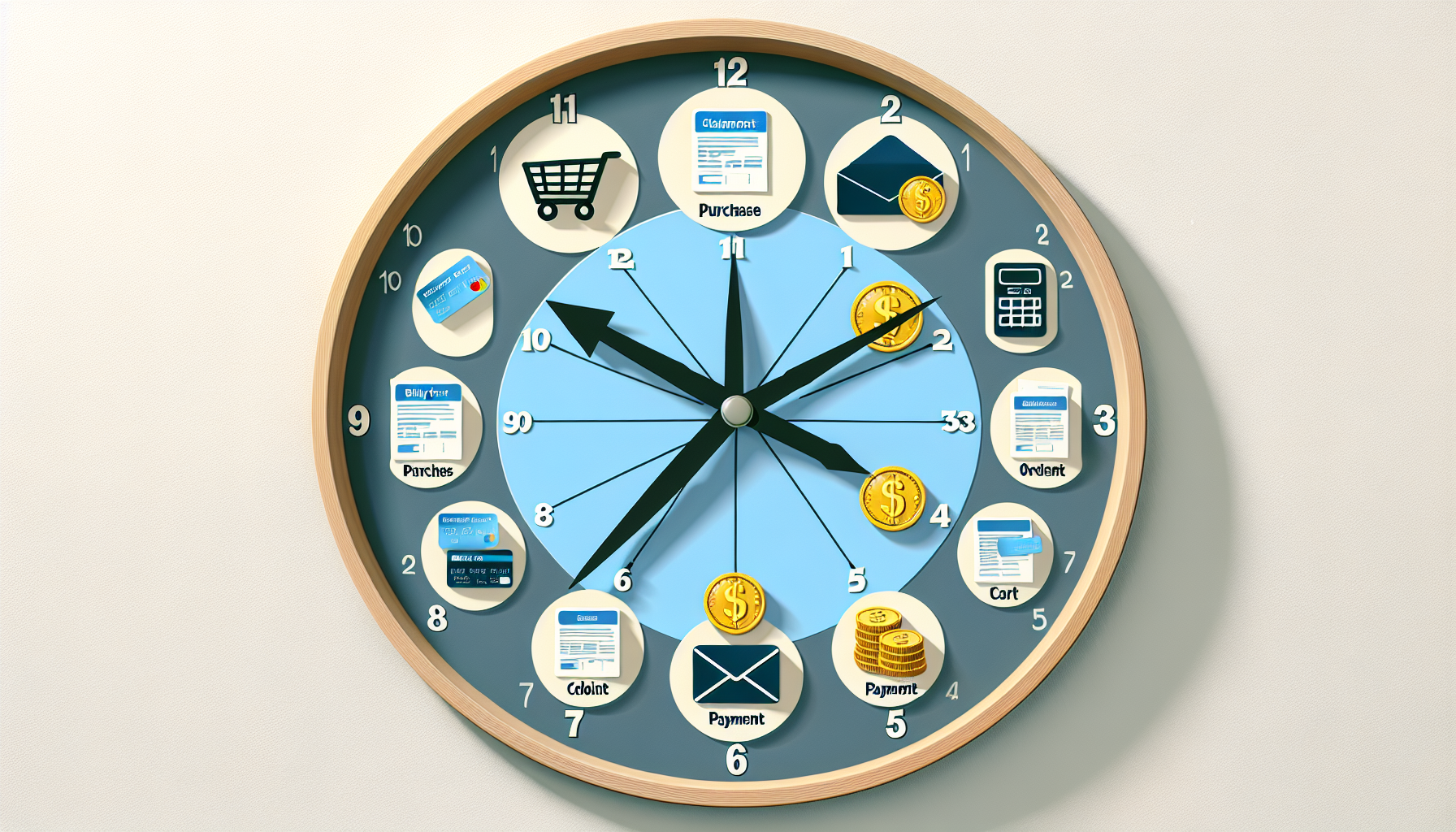
Credit cards are ubiquitous in today’s financial landscape, acting as powerful tools for purchases, rewards, and even building credit history. But like any tool, the key to unlocking their potential lies in understanding their credit card meaning. Ready to unravel the mysteries of these plastic powerhouses and learn the credit card meaning that can help you make the most of them?
Key Takeaways
- Understanding credit cards involves decoding the definition, anatomy and types of cards, as well as understanding their role in borrowing money.
- Making timely payments, managing credit utilization and regularly reviewing statements are key to using a card responsibly.
- Credit card usage has an impact on one’s financial future by affecting their credit reports and scores.
Decoding the Credit Card: A Definition

A credit card, in its most basic sense, is a financial tool that enables you to:
- Borrow money, up to a defined limit, from a financial institution for making purchases
- Build your credit history
- Show your spending habits, financial discipline, and creditworthiness
Every usage of your card reveals these aspects, which can greatly impact your financial future and the efficiency of your accounting software in managing your customer account, including handling existing invoice details and providing the original invoice.
The Anatomy of a Credit Card
Imagine a credit card as a mini-computer that communicates with your bank every time you swipe, dip, or tap it. The card number, expiration date, security code, and cardholder’s name are all essential components of this communication process. It’s like a passport that verifies your identity and vouches for your creditworthiness every time you make a transaction.
Types of Credit Cards
Just as everyone has unique financial needs and habits, there’s a variety of credit cards to match. From standard cards that offer no-frills credit to rewards cards that let you earn cashback, points, or miles, there’s a card for every wallet. Each type of card has its own set of features, benefits, and costs.
Selecting the appropriate one is comparable to picking the perfect pair of shoes – it should ideally suit your needs and lifestyle.
The Role of Credit in Credit Cards

Credit is the lifeline of credit cards. It’s the magic that allows you to make purchases even when your wallet is light. But this magic comes with its own rules. Here are some key terms to understand:
- Credit limit: This dictates how much you can borrow.
- Interest rates: These determine how much you pay for the convenience of borrowing.
- Fees: These are additional charges that may be associated with your credit card.
Understanding these terms, including credit memorandum, will help you make informed decisions about your credit card usage.
It’s comparable to borrowing a book from a library – there’s a return deadline, and failure to meet it results in fines, unlike situations where a cash refund might be applicable.
Understanding Your Credit Limit
Every credit card comes with a credit limit – the maximum amount you can borrow. It’s like your personal borrowing threshold, determined by the card issuer based on your creditworthiness. This limit not only controls how much you can spend but also plays a vital role in the calculation of your credit score.
It’s akin to a highway speed limit – adhering to it is not only safer but also advantageous for your credit journey.
Interest Rates and Fees
The interest rates and fees associated with your credit card are like the price you pay for the convenience it offers. The interest is calculated based on the Annual Percentage Rate (APR), and the fees can include annual fees, late payment fees, and balance transfer fees.
It’s similar to renting a car – you pay for the convenience of its use, and the cost fluctuates based on the duration and distance of usage.
How to Use a Credit Card Responsibly

Using a credit card responsibly is the key to unlocking its benefits and avoiding potential pitfalls. It’s a delicate balancing act of making timely payments, managing credit utilization, and regularly reviewing your statements.
It’s akin to maintaining a diet – while you indulge in treats, you also monitor your calorie intake and exercise to maintain health.
Making Timely Payments
Making timely payments on your credit card is a fundamental aspect of responsible credit card usage. It not only helps avoid late fees and interest charges but also contributes positively to your credit history. It’s comparable to meeting work deadlines – consistent punctuality not only boosts your reputation but also paves the way for future opportunities.
Managing Credit Utilization
Your credit utilization, or the percentage of your credit limit you use, can significantly impact your credit score. Keeping this ratio low demonstrates that you’re managing your credit responsibly and not maxing out your credit cards.
It’s similar to dining at a buffet – the ability to eat all you want doesn’t necessarily mean you should.
Reviewing Statements Regularly
Regularly reviewing your credit card statements helps you keep track of your spending, spot any errors or unauthorized transactions, and understand your credit card habits. It’s akin to regularly checking your car’s fuel gauge – it aids in planning ahead, avoiding unexpected surprises, and maintaining a smooth journey.
The Credit Card Billing Cycle Explained

The credit card billing cycle is a recurring monthly phase where all your credit card transactions are documented and billed. It’s akin to a monthly series – each episode (or transaction) contributes to the storyline (or statement), and the conclusion of the series (or billing cycle) presents a comprehensive picture (or statement). This cycle can be considered an invoicing process for credit card users, similar to a previously issued invoice.
From Purchase to Payment
From the moment you make a purchase to the moment you pay your bill, your credit card goes through a systematic process. The purchase date, the statement closing date, and the payment due date are all key milestones in this journey. It’s like watching a movie – you follow the plot from the opening scene to the climax and finally, the resolution. Understanding the difference between credit card transactions and debit notes can help you manage your finances more effectively. In some cases, it may be necessary to issue a credit note to correct a billing error or address a customer’s concern.
Grace Periods and Their Benefits
A grace period is the time between the statement closing date and the payment due date. During this period, no interest is charged on your purchases if you pay your balance in full by cash payment or other methods. It’s like a free trial period – you enjoy the benefits without any cost if you cancel (or pay) before the trial ends.
Credit Card Rewards and Incentives

Credit card rewards are like a cherry on top. They offer you benefits like cash back, points, or miles for simply using your credit card. But to truly enjoy these rewards, you need to understand how they work and how to maximize them.
Maximizing Reward Potential
Maximizing your credit card rewards is an art. It involves understanding the reward structure and strategically using your card for eligible purchases. It’s like a strategy game – you plan your moves to earn maximum points.
Understanding Terms and Conditions
The terms and conditions of your credit card rewards program are like a roadmap. They help you navigate the rewards landscape, understand the do’s and don’ts, and make informed decisions about reward redemption. It’s like reading the user manual before using a new gadget – it helps you understand how to use it effectively and avoid potential pitfalls.
Navigating Credit Card Applications
Applying for a credit card is akin to beginning a journey. It requires:
- an assessment of your eligibility
- comprehension of your creditworthiness
- selection of an appropriate card that suits your financial necessities and objectives.
Eligibility and Creditworthiness
Eligibility and creditworthiness are like your passport and visa for the credit card journey. They’re determined by factors such as your credit score, income, and debt-to-income ratio, and they play a key role in the approval process.
Selecting the Right Card
Choosing an appropriate card is a significant step in your credit card journey. It requires a comparison of various cards’ features, fees, interest rates, and rewards to find the most suitable fit for your needs. It’s akin to selecting the ideal vacation destination – you weigh multiple factors such as cost, climate, attractions, and choose the one that aligns with your preferences.
Protecting Your Credit Card and Financial Information
Securing your credit card and financial information is akin to protecting your home. It’s vital in preventing fraud and identity theft. While your credit card comes with numerous built-in security features, adhering to certain best practices for added safety is equally important.
Security Best Practices
Security best practices for your credit card are like the keys to your home. They involve regularly monitoring your accounts, using strong passwords, and being cautious with public Wi-Fi.
What to Do in Case of Fraud
If you ever fall victim to credit card fraud, it’s important to know the steps to take. Just like you would call the police and secure your home in case of a burglary, you should immediately report the incident to your card issuer and take necessary steps to secure your accounts.
Credit Cards and Building Credit History
Credit cards can be instrumental in establishing your credit history. They’re akin to a canvas where your financial behavior paints a representation of your creditworthiness.
Impact on Credit Reports
Credit card usage leaves a footprint on your credit reports. These reports tell the story of how you manage your credit, and they play a key role in determining your credit scores.
It’s like a school report card that records your academic performance and impacts your future educational opportunities.
Strategic Borrowing
Strategic borrowing entails judicious use of your credit card to exhibit responsible credit management and enhance your creditworthiness. It’s comparable to a strategic game where each move you make influences your score.
Summary
We’ve taken a journey through the world of credit cards, unraveling their mysteries, and understanding their impact on our financial lives. But as with any journey, the learning doesn’t end here. With every swipe, dip, or tap, there’s a new lesson to learn, a new insight to gain. So keep exploring, keep learning, and keep using your credit card wisely!
Frequently Asked Questions
What is a credit card simple definition?
A credit card is a line of credit that can be used to borrow money, make purchases, transfer balances and get cash advances. It typically requires repayment plus interest at a later date. There are two main types of credit cards, secured and unsecured, issued by stores, banks, or other financial institutions, and often come with perks like cash back, discounts, or reward miles.
What is credit card vs debit card?
Debit cards pull funds from your existing bank account, whereas credit cards are borrowed funds issued by a bank and charge interest on the money the cardholder borrows. With a debit card, the funds for your purchase are taken instantly, while with a credit card, you have more time to pay the bill.
What is the real purpose of a credit card?
A credit card is a payment mechanism that enables you to purchase goods and services or make cash advances on credit. It typically provides an unsecured revolving line of credit with interest charges. It’s important to pay the balance in full each month, but you must pay at least the minimum amount due.
Are credit notes positive or negative?
Credit notes are negative invoices used to reduce the amount due on an invoice, either by cancelling it completely or for an amount less than the invoice.
How can I use my credit card responsibly?
To use your credit card responsibly, pay your bills on time, keep track of your credit utilization ratio, and review your credit card statements regularly.


































